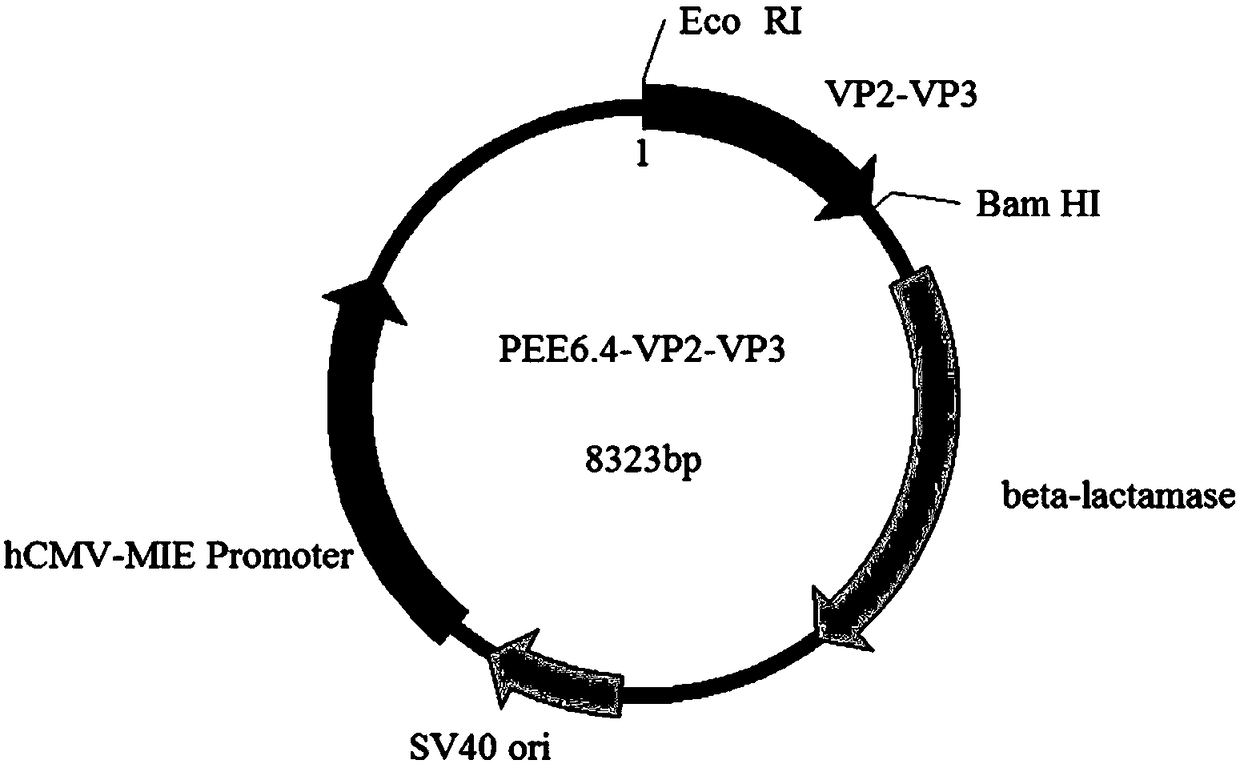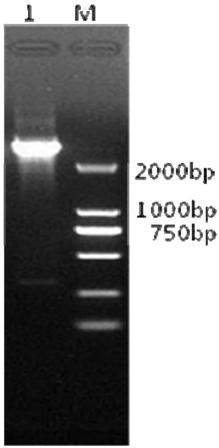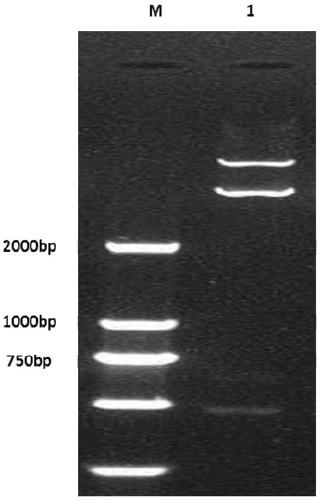Fusion protein of infectious bursal disease virus, preparation method, application, expression system of fusion protein and vaccine comprising fusion protein
A technology of fusion protein and bursal disease, applied in antiviral immunoglobulin, veterinary vaccines, biochemical equipment and methods, etc., can solve problems such as unstable efficacy and unsafe source of vaccine antigens, and achieve high protection rate , Reduce production cost, good safety effect
- Summary
- Abstract
- Description
- Claims
- Application Information
AI Technical Summary
Problems solved by technology
Method used
Image
Examples
preparation example Construction
[0051] A method for preparing the above fusion protein, comprising expressing the gene encoding the fusion protein in a host. The host in the present invention can be, but not limited to, an Escherichia coli expression system, a yeast expression system, an insect expression system, a plant expression system or a mammalian expression system. Since the protein expressed by mammalian cells is translated and processed, its structure and biological properties are closer to natural proteins, so the present invention preferably uses a mammalian expression system to express the gene encoding the fusion protein.
[0052] In a preferred embodiment of the present invention, a mammalian expression system is used to express the gene encoding the fusion protein. Since the protein expressed by mammalian cells is translated and processed, its structure and biological properties are closer to natural proteins, so the present invention preferably uses a mammalian expression system to express th...
Embodiment 1
[0091] Example 1 VP2-VP3 Gene Design and Synthesis
[0092] VP2-VP3 gene design and synthesis: After optimization of the VP2 and VP3 sequences in GenBank accession number M97346.1, the length of VP2 is designed to be 1356bp, with the sequence shown in SEQ ID NO.1, and the length of VP3 is 870bp, with the sequence shown in SEQ ID NO. .2 the sequence shown. A Linker is used between VP2 and VP3, and the Linker sequence has the sequence shown in SEQ ID NO.3. The full length of the VP2-VP3 gene is 2256bp, and has the amino acid sequence shown in SEQ ID NO.4 and the nucleotide sequence shown in SEQ ID NO.5. VP2-VP3 gene synthesis was completed by Shanghai Sangon Biological Company.
Embodiment 2
[0093] Example 2 Construction of PEE6.4-VP2-VP3 recombinant plasmid
[0094]2.1 Add restriction sites: Add restriction sites respectively upstream and downstream of the VP2-VP3 gene sequence by PCR amplification: EcoR I, BamH I, PCR amplification upstream primers are shown in SEQ ID NO.6, PCR amplification The downstream primer is shown in SEQ ID NO.7. PEE6.4-VP2-VP3 plasmid map as figure 1 shown.
[0095] 2.2 VP2-VP3 gene and vector double enzyme digestion reaction
[0096] 2.2.1 Construct a 50 μL reaction system, mix the components according to the table below, and then bathe in water at 37°C for 2 hours.
[0097] 10×buffer
5μL
DNA sample
2μg
Eco RI
2.5μL
Bam HI
2.5μL
dd H 2 0
38μL
[0098] 2.2.2 Recovery of target DNA fragments: DNA gel recovery kit (purchased from Beijing Laibao Technology Co., Ltd.) was used to recover the enzyme-cut target fragments. The steps are as follows:
[0099] (1) After agarose ...
PUM
| Property | Measurement | Unit |
|---|---|---|
| concentration | aaaaa | aaaaa |
Abstract
Description
Claims
Application Information
 Login to View More
Login to View More - R&D
- Intellectual Property
- Life Sciences
- Materials
- Tech Scout
- Unparalleled Data Quality
- Higher Quality Content
- 60% Fewer Hallucinations
Browse by: Latest US Patents, China's latest patents, Technical Efficacy Thesaurus, Application Domain, Technology Topic, Popular Technical Reports.
© 2025 PatSnap. All rights reserved.Legal|Privacy policy|Modern Slavery Act Transparency Statement|Sitemap|About US| Contact US: help@patsnap.com



